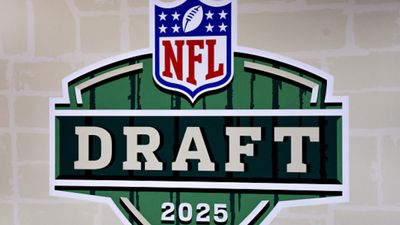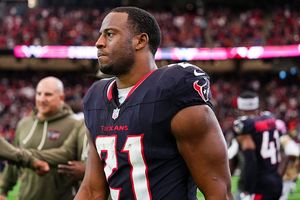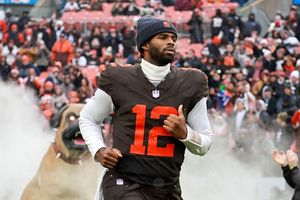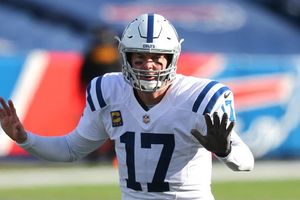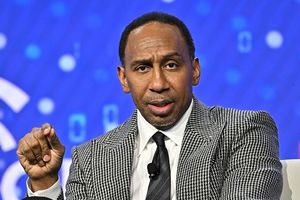The NFL Draft is typically a celebration of football’s future—a night where hope and hype collide. But the 2025 class is bucking tradition, labeled by experts as one of the weakest in decades. Scouts and analysts, accustomed to debating blue-chip prospects, are instead scrambling to find any player worthy of first-round buzz.
From undersized running backs thrust into the spotlight to quarterbacks deemed “projects,” this draft has become a cautionary tale of talent scarcity. Here’s why the 2025 pool is facing unprecedented criticism—and what it means for the league’s future.
The Ashton Jeanty Conundrum
Boise State running back Ashton Jeanty has unwittingly become the poster child of this draft’s woes. At 5’8” and lacking prototypical NFL size, Jeanty would typically languish as a Day 2 prospect. Yet in a class starved of star power, he’s being touted as a potential top-10 pick—a reality that’s left analysts baffled.
“When a 5-foot-8 running back from Boise State is considered the third-best talent in your draft, you’ve got problems,” NFL insider John Middlekauff declared on The Herd.
Jeanty’s rise isn’t about transcendent skill; it’s a damning indictment of the 2025 pool. Teams, faced with a dearth of elite prospects, are grasping at straws.
“They’re saying, ‘We might as well take this little guy who’s at least good,’” Middlekauff added.
For context, recent top-10 RBs like Christian McCaffrey, Saquon Barkley, and Bijan Robinson boasted measurables and pedigrees Jeanty can’t match. The message is clear: this class isn’t just thin—it’s redefining mediocrity.
Quarterbacks & Receivers: Projects over proven talent
Even marquee positions like quarterback and wide receiver offer little respite. Miami’s Cam Ward and Colorado’s Shedeur Sanders headline the QB group, but scouts label them “developmental” rather than Day 1 starters. Ward’s erratic decision-making and Sanders’ raw mechanics (despite his lineage) scream work in progress.
Similarly, receivers Luther Burden III (Missouri) and Tetairoa McMillan (Arizona) flash potential but lack the polish of past draft darlings like Ja’Marr Chase or CeeDee Lamb.
The issue isn’t versatility—it’s the absence of elite traits. Burden’s route-running is inconsistent, while McMillan struggles against physical corners. In a league where WRs dominate headlines, this group feels like a downgrade.
Positional dilemmas: Versatility ≠ star power
Modern NFL schemes crave hybrid players, but the 2025 class mistakes adaptability for excellence. Linebackers touted as “sideline-to-sideline” lack instincts; edge rushers praised for “motor” can’t bend the arc. Even offensive linemen, often a safe bet in lean drafts, lack the anchor or footwork to inspire confidence.
Analysts warn this isn’t a one-off. Like the NBA—where diluted talent pools now cycle every 3-4 years—the NFL faces a reckoning. Roster expansion, NIL deals, and early draft entries have spread talent thin, leaving scouts to sift through “good enough” rather than “game-changer.”
Teams in no-win territory
Front offices are stuck. Trading down? Good luck finding a partner in a draft nobody believes in. Reaching for need? That’s how franchises stay mediocre. The 2025 class forces GMs into uncharted territory: drafting for floor over ceiling.
For fans, the fallout is palpable. The draft’s usual spectacle—buzzer-beater trades, viral green room moments—risks being overshadowed by apathy. As Middlekauff bluntly put it: “The NFL is very turned off by this crop.”
The 2025 draft isn’t just a talent drought—it’s a mirror. It reflects the consequences of a sport expanding faster than its talent pipeline. While Jeanty & Co. will hear their names called, the real drama lies offstage. Can the NFL address systemic issues like early player burnout and roster bloat? Or will “worst ever” become a recurring headline? For now, teams brace for a draft where the biggest victory might be avoiding regret.
ADVERTISEMENT
